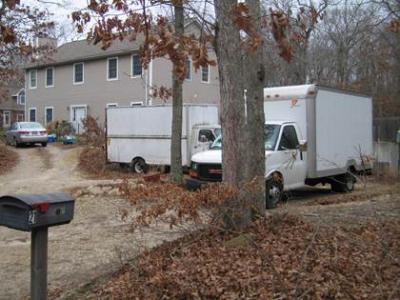Town Can Do Without F.A.A. Money for Airport, Report Says
Town Can Do Without F.A.A. Money for Airport, Report Says
At its meeting Thursday in Town Hall, the East Hampton Town Board is expected to approve the forthcoming phase of an airport noise study designed to convince the Federal Aviation Administration that the problem warrants restrictions on airport use in order to gain F.A.A. approval for the town to exercise its own authority over the airport.
That could include limits on takeoffs and landings within certain hours or by certain types of aircraft; a curfew, or perhaps even an outright ban on helicopters.
The $79,000 phase-three study by Harris Miller Miller & Hanson will provide more details about helicopter noise and a detailed definition of the problems, as well as an analysis of the effects of the alternatives. The results are to be presented to the board on Feb. 3.
Key to the town’s ability to enact local airport rules is maintaining a degree of autonomy from the F.A.A. by eschewing further federal grants. With the grants come “grant assurances,” the obligation to operate the airport according to F.A.A. rules.
At a town board work session on Tuesday, members of the airport finance subcommittee presented a report on airport revenue. Arthur Malman, the town’s budget and finance advisory committee chairman, and Peter Wadsworth, a member who prepared the financial analyses, said the committee had created a model that can be used to gauge the financial impact of any use restrictions, for example on landing and other fees. The calculation is key to determining whether airport repairs and capital improvements could be paid for without the F.A.A. grants.
Based on a review of airport operations during the first nine months of this year, and even should helicopter traffic be reduced by half, the group said that revenue from the airport would be enough to carry up to about $5.6 million in debt over the next five years, more than the $5.1 million that had previously been estimated. Counting in possible “revenue enhancements” such as a paid parking system and airport-property rentals, more than $9.7 million in debt could be carried, even with 50 percent fewer helicopter landings.
The calculation did not take into account expenses that could be incurred should the new regulations be challenged in court. The cost of litigation, the subcommittee warned, “could be substantial.”
Nonetheless, said the report, “it is now apparent that the airport, which has been neglected for many years, should be able to support substantial capital repairs and improvements.” Some key safety-related repairs are already under way.
The report said the town board “now has the opportunity to work with its new airport engineers to fashion a very robust five-year capital plan — without the need for any real estate taxes or other external revenues.” It recommended that the town institute paid parking at the airport right away, and negotiate contracts with rental car companies located there for their use of a portion of the lot by next summer of fall. The town should also discuss long-range plans with the rental companies, Mr. Malman said, and perhaps reassess their leases.. Hertz, for instance, currently pays just $750 per month, he said.
Depending on the daily parking fee that is established, and based on the expected number of vehicles over the course of a year, the town could see between $53,000 and more than $159,000 in income from the parking lot, the committee said.
In addition, the group recommended that the town lease airport land to provide additional hangars for locally owned aircraft, and seek a commercial real estate broker to oversee the rental of 35 acres of vacant airport land zoned for commercial-industrial use.
“We see that as a really major source of revenue,” Mr. Malman said. A professional broker could “actively market the property,” he said.
Under F.A.A. rules, he said, land within the airport footprint, if put to non-aeronautical use, must be rented at fair market value and the proceeds kept in the airport fund. However, he noted, the fair market value provision need not be applied to leases designating aviation uses, such as the new hangars.
“The town has talked for years about the potential for bringing in businesses and creating jobs” at the industrial park it created at the airport, but to little avail, said Supervisor Larry Cantwell. Consulting with a commercial real estate broker is “a professional way of going about it,” he said, that will, if all goes according to plan, yield results.
Improved collection of landing fees could also add to the airport revenue stream, according to the report. For every landing that is not recorded by cameras and other data-collection systems that allow fees to be assessed, the town loses money, Mr. Malman said. One move that could help would be to house the airport managerial offices in their originally intended position in the terminal, a rotunda that provides a view of incoming traffic. The offices were not placed there, he said, because of the cost of meeting federal handicapped-accessibility requirements.
Also in the report are recommendations for an upgrade to the aviation fuel farm and fuel operations, including the replacement of aging underground fuel tanks; a change in the format of financial accounting statements to provide better clarity, and a suggestion that the town support changes to state law that would allow 20-year bonds to be issued for airport projects. The committee is to return to the board for further discussion at an upcoming work session.
At tonight’s meeting, the board is also expected to approve a $260,000 bond for the purchase and installation of a new automated weather observance system, which Jemille Charlton, the airport manager, described to members on Tuesday. The system is needed to replace an outdated one from 2008, Mr. Charlton said. It will provide information on wind speed, direction, gusts, temperature, visibility, precipitation, and other weather data, all of which, he said, could be accessed by the public as well.




